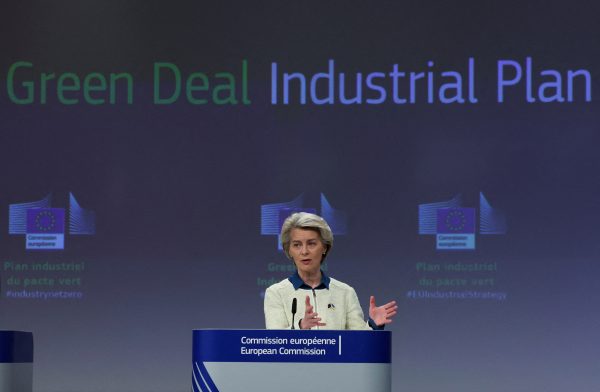Two major instruments are causing consternation among developing countries. The first is the European Union Deforestation-Free Regulation (EUDR), requiring all EU import and export commodities to be traceable as ‘deforestation-free’. The second is the European Union Carbon Border Adjustment Mechanism (CBAM), which imposes duties on products imported from countries without a carbon pricing mechanism or with carbon prices below the European Union Emissions Trading System. While the European Union maintains that the Green Deal is an environmental effort rather than a trade protection measure, it will still have adverse effects on ASEAN economies.
The impact of ongoing diplomatic negotiations is likely to be limited. On 29 June 2023, the European Union agreed to establish a Joint Task Force with Indonesia and Malaysia to discuss the EUDR — the same day it entered into force. With the CBAM expected to enter into force on 1 October 2023, there are questions about the impact on free trade agreement negotiations between the European Union and ASEAN member states, namely Indonesia and the Philippines.
ASEAN and EU decision makers must chart a path towards an equitable, business-centric resolution. The European Union should increase financial and technical support for a carbon-neutral economy, while ASEAN countries should enhance their regulatory frameworks to optimise the benefits of such an economic model.
The EUDR will initially cover seven commodities — palm oil, soy, wood, cattle, cocoa, rubber and coffee — and several derived products. Its extensive due diligence and tracking-and-tracing requirements will impose large compliance costs on Southeast Asian farmers, as producers must submit certificates reporting greenhouse gas emissions during production. The European Union also plans to establish a monitoring system, involving audits of goods-producing countries. These strict rules may further exclude smallholders from the export market and reduce their incomes.
Meanwhile, the CBAM will apply duties on certain products — including iron and steel — imported from countries without carbon pricing mechanisms or with carbon prices below the Emissions Trading System. This will apply to Indonesia and Malaysia’s iron and steel exports to the European Union. The impacts may even grow as the European Union is set to extend the sectors covered.
The CBAM will cause welfare losses in developing countries and welfare gains in developed countries, contradicting the principles of equity and ‘common but differentiated’ responsibilities. The CBAM could result in an annual welfare gain of US$11 billion in developed countries in 2030, with an annual welfare loss of US$9 billion in developing countries, compared to a baseline scenario.
In the same scenario, ASEAN could incur an annual welfare loss of US$500 million in 2030. The total net welfare transfer, from developing to developed countries, at US$20 billion, almost negates the EU’s US$25 billion climate financing for developing countries in 2021.
The societal and political costs of the CBAM and EUDR are harder to quantify. But ASEAN economies have a right to design their own green economy strategies. Small- and mid-size manufacturers are unlikely to withstand and taxation without adequate support.
To address these issues, the European Union should increase its climate financing and technical support to a level beyond reversing welfare loss in ASEAN caused by EU climate regulations. This expanded commitment should be translated into a significant climate finance package to enable ASEAN to meet the Green Deal requirements and improve its climate resilience. While the recently launched (US$95 million) EU–ASEAN Green Initiative and EU–ASEAN Sustainable Connectivity Package are welcome initiatives, they should target manufacturers and smaller businesses that will be directly impacted by the CBAM and EUDR.
EU–ASEAN climate cooperation should also include the establishment of national and regional carbon markets and pricing, along with a steady increase of carbon asset prices — including nature-based solutions in forests, peatland, and agriculture — to levels closer to the Emissions Trading System. One idea is to support mutual recognition and interoperability of emission reduction credits between ASEAN and the European Union. There should also be recognition that emission offsets remain a major tool for ASEAN to account for their economic growth and to comply with the required sustainability reporting requirements.
EU support should extend to climate-related investment in concrete transition projects, including those related to energy, circular economy, green transport and smart cities. The Just Energy Transition Partnership with and is a solid start. But the partnership could shift from the traditional donor-driven model of loans and grants towards a common but independent financing mechanism, catalysing private and public funding to enable third parties to buy coal assets for early retirement.
ASEAN member states and the European Union should ensure their regulations facilitate rather than impede trade and investments. The Green Deal need not serve as a cautionary tale where good regulatory intentions have unintended negative consequences.
Brasukra G Sudjana is Senior Director at Vriens and Partners, a policy consultancy firm, and former Assistant Director for External Economic Relations, ASEAN Secretariat.
Cazadira F Tamzil is Director of Public Policy at Pijar Foundation, Indonesia.

